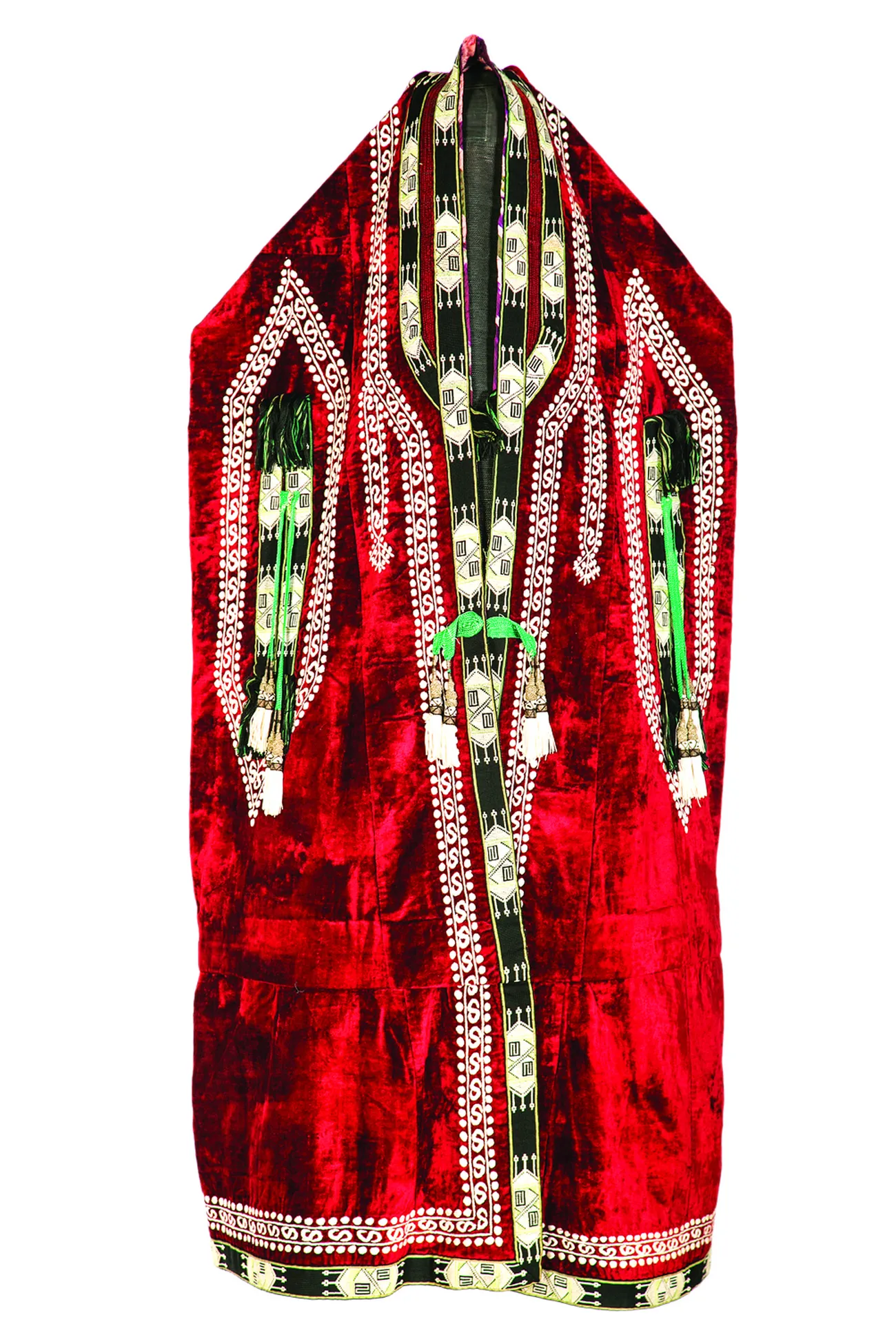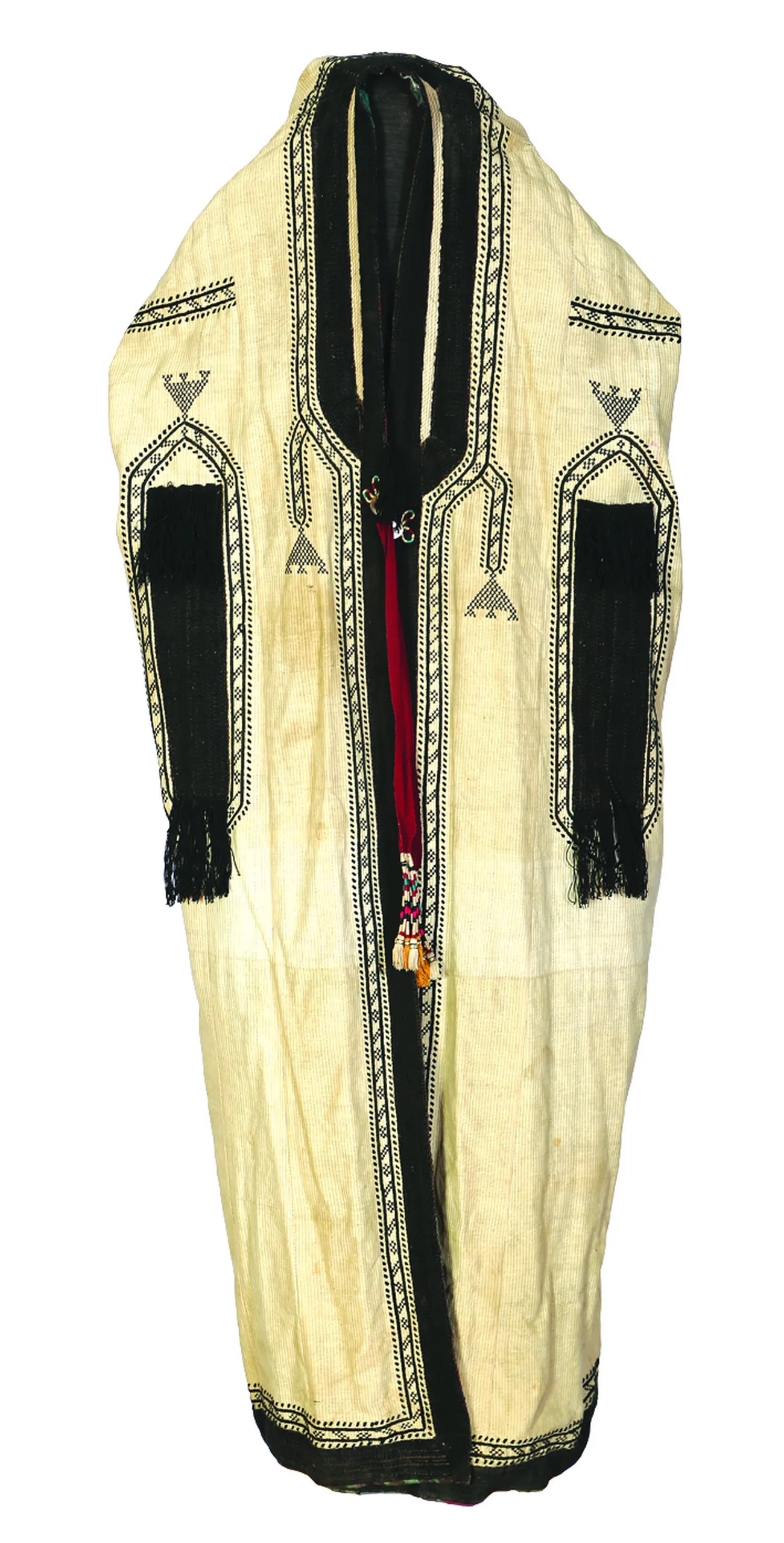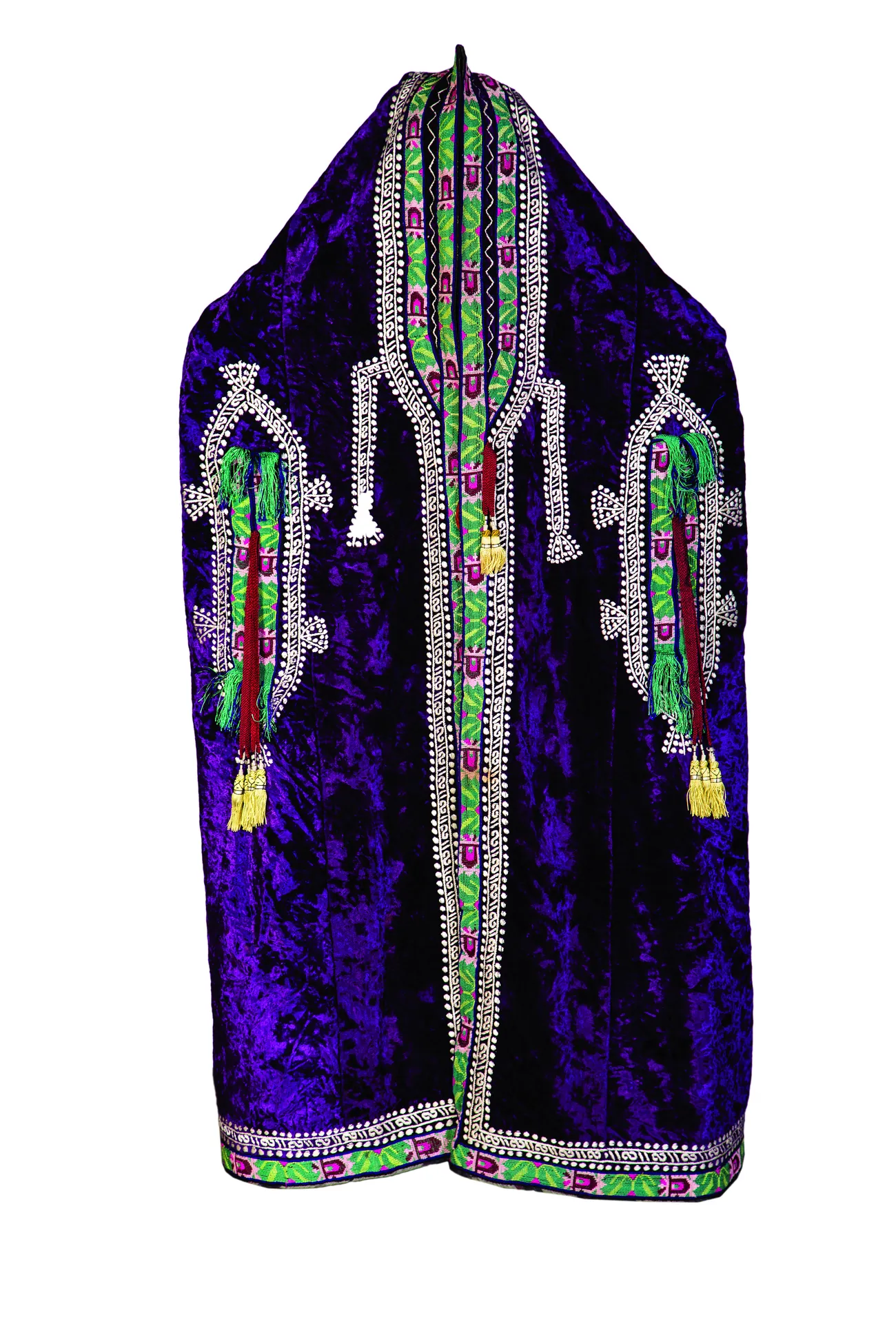The paranja had a lining from a cheap fabric (astar, chit), the hem were sewn with slanting strips of colored adras (0.5 cm). Initially, the paranja had very simple décor: the collar, hem, flap and sleeves had jiyak or magyz edging. In the early 20th century, wider and bright paranjas came into fashion; women started decorating them with black ornamental gul-jiyak edging with bright colored fringes with silk threads.
The ends of the sleeves and false pockets were decorated with popuk while embroidery featured su patterns, zigzagging ikon-izi (snake traces) in the form of small black paprika peas (muruch nuskha), then in the form of curls, twigs and ram horns.
You will find more examples of national Uzbek clothes in the book-album "Traditional Uzbek costume on materials of museum and private collections of Uzbekistan (Part 1)" (volume XLVIII) from the series "Cultural legacy of Uzbekistan in the world collections."
The general sponsor of the project is the oilfield services company Eriell-Group.






